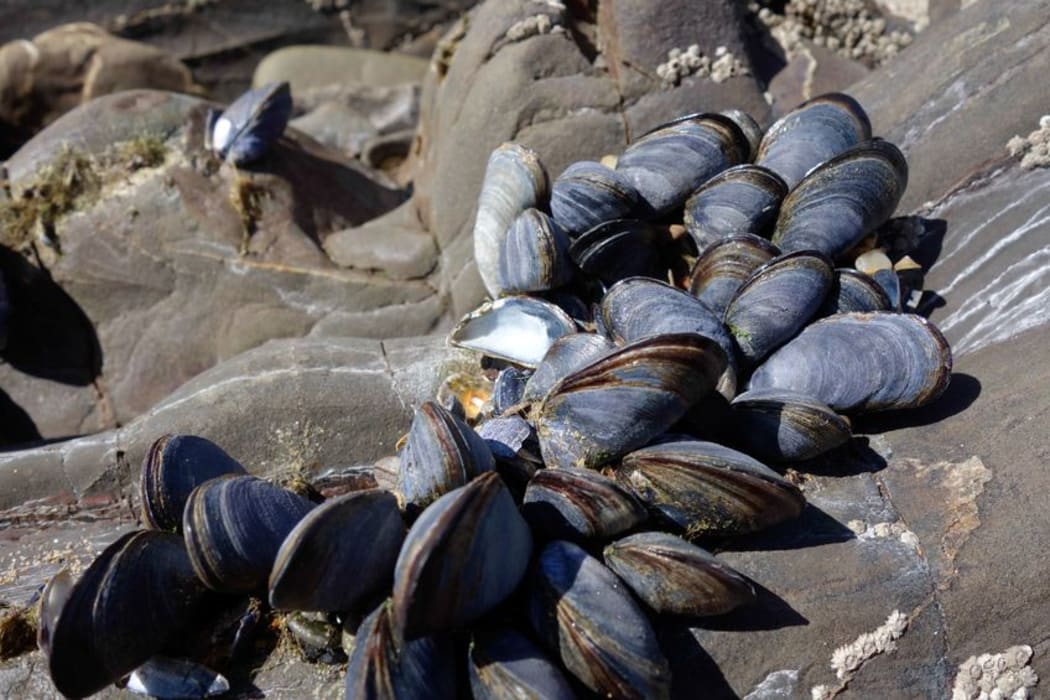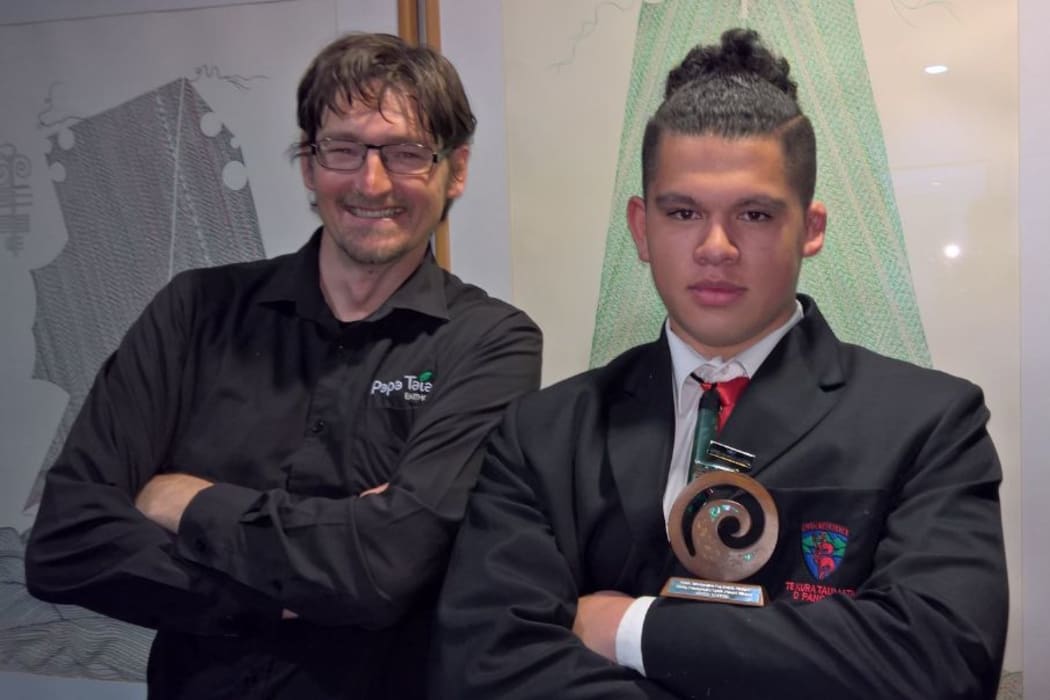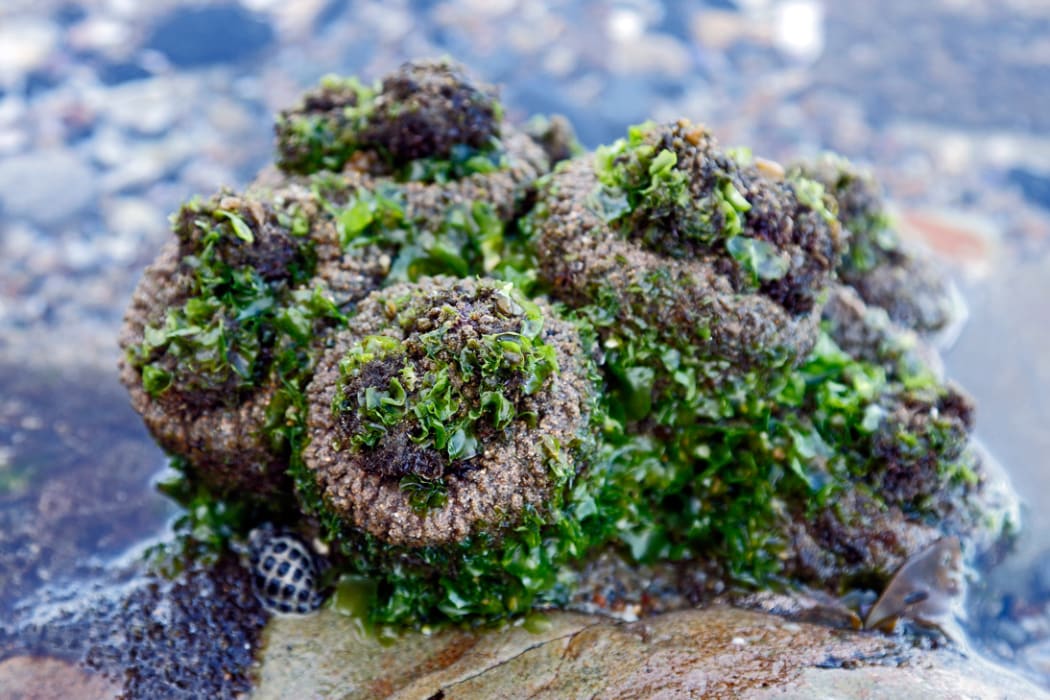Kutai (mussels) are a staple food in the Far North community of Panguru, but under threat from the invasive Australian sea squirt 'cunjevoi' - known as 'titi kuri' in Northland
Now, local high school students have started a business removing the pest from the rocks and converting it into a potent organic fertiliser.

Photo: 123rf
Early last year, education provider Papa Taiao Earthcare organised a cleanup of the weed.
The Panguru Area School students were on an educational outing to the beach when they became aware of how it was smothering the mussel beds.
Later, student Allen Karena had the idea of running a community competition to figure out a solution to the problem - and eventually, the fertiliser was devised.
Scientist Aaron McCloy recalls the day the students came across the titi kuri: "We had a look and we saw ‘hang on, what’s that?’ and we were just like ‘wow, that’s not native’.
"We looked and we researched a little bit and we realised it was an invasive marine pest from Australia, its niche overlaps directly with the mussels, it’s wiped out the mussel beds in the Far North and it had moved down to Mitimiti unbeknown by a lot of the locals.
"Suddenly we realised there was this invasion underway that had slipped under the radar."
It was the teenagers who took control of the situation, he says.
"The students said to me ‘what are you going to do about it?’, and I said ‘well, actually, what are we going to do about it - what are YOU going to do about it?
"That’s when they took the momentum."

Scientist Aaron McCloy and Panguru Area School student Allen Karena, Northland winner of the 2018 Trustpower Youth Community Spirit award Photo: Te Kura Taumata O Panguru / Facebook
Allen Karena's idea to run a community competition to get ideas for dealing with titi kuri led to the discovery that an organic fertiliser could be made from decaying weed matter once it had been cleared off the rocks.
The students worked with Papa Taiao to do more research, he says - "deeper, into how the fertilisers relate to each other, and we found the main ingredient was pretty much just seaweed, so we decided to run another experiment with the kuri and the seaweed together.
"It’s very deceiving, like the first time you see it originally you think it’s a rock ... but you actually walk over them and stand on them you find it’s real squishy. Not really sponge-like but like foam, in a sense, if that makes sense."
The discovery could be valuable further north, as well, he says.
"Not only in our area, in Mitimiti out on the west coast, but also in Ahipara and other areas that have also been wiped of their kutai because of this invasive pest."
McCloy says the students have been getting good results with the fertiliser on lawns in Panguru and are beginning to sell it.
"When they started doing their trials and they saw that it caused a 31.5 percent increase in growth of grass in just three weeks - when they did a field trial - that was crazy growth.
"Suddenly they went from ‘oh this could be a fertiliser’ to ‘wow, this is amazing fertiliser’ and their self-belief grew and they actually invested their own money ... for students to invest their own money in their company that’s really self-belief."

The Australian sea squirt cunjevoi, aka titi kuri. Photo: Tim J Keegan / CC BY-SA 2.0
The fertiliser sales are going up and up, McCloy says.
“Every time they’re selling, they’re removing a pest from the environment, and then when they went back and they looked, they saw millions of baby mussels, millions of baby kutai, on the rocks that had been cleared after the competition by the local community.
"I’ve researched extensively around it, I haven’t seen anybody else that’s been using it as a fertiliser, I've seen that Northland Regional Council did a $40,000 study where they sent some people up to map where it was - the results of that were that it’s an invasive pest and it’s everywhere and there’s limited success on manually removing it.
"The limited success - when you’ve got a reason to remove it, it’s not ‘limited success’."
The project has boosted the students' confidence, he says.
"That’s what the students at Taumata have discovered ... working with their marae, working with their iwi, is that they’ve realised ‘we need to look after our kutai,’ and that’s where kaitiakitanga comes in, and in my mind they are kaitiaki, and they’re not just talking it, they’re walking it."
Allen - who recently won the Trust Power Youth Community Spirit award for getting the community together to collect titi kuri - says the experience has changed him forever.
"I’ve actually felt the sense of being a kaitiaki, a leader of the next generation to better help the community and the environment."
If the supply of titi kuri dries up, the students plan to start an oyster farm to help cover the costs of making the fertiliser.
"And also to increase the employment out in our area so people don’t have to travel far for work," Allen says.

